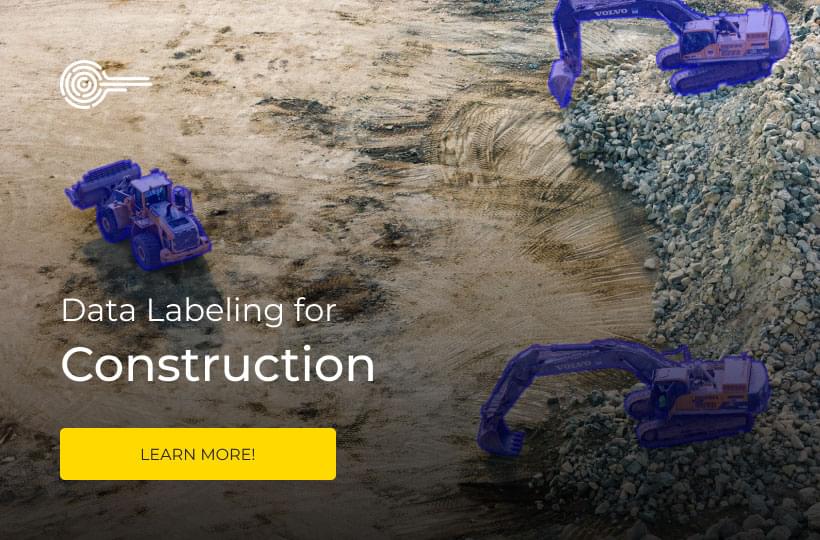Real-World Data for Machine Learning Projects:Where to Find It

With such rich data at hand, opportunities for machine learning projects with real-world data abound. Projects range from predicting health outcomes with Electronic Health Records to enhancing cybersecurity with the PhiUSIIL Phishing URL Dataset. This dataset contrasts 134,850 legitimate URLs against 100,945 phishing URLs.
To effectively use these diverse and rich datasets for machine learning project ideas with practical data, knowing where to find and how to utilize them is key. This knowledge forms the foundation for breakthroughs that truly blend the digital with the real. It's where innovative concepts come to life, grounded in actuality.
Key Takeaways
- Understanding the vast landscape of datasets available can significantly enhance the quality and relevance of your machine learning projects.
- Exploring various sources such as Kaggle, Amazon, UCI Repository, and others opens doors to a plethora of real-world data.
- Real-life datasets from sources like the RT-IoT2022 can provide a sandbox for simulating and combating cyber threats.
- Clinical datasets like those from Children’s Hospital St. Hedwig or Infrared Thermography Temperature Dataset offer tangible benefits for medical research and diagnosis.
- For agritech advances, a dataset classifying pests into 17 categories can revolutionize how we manage crop health.
- Real-world data encapsulates a broad spectrum including patient-reported outcomes, wearables, and EHRs, each with unique challenges and potential.

The Importance of Real-World Data in Machine Learning
Starting real-life machine learning projects means diving into the complexities of real-world data. This kind of data acts like a compass for navigating the vast information technology sea. Your models crave the complexity and unpredictability that real datasets offer. They are crucial for perfecting AI algorithms and saving time and resources during model development.
A research team focusing on action recognition acquired significant insights. They created SynAPT, a synthetic dataset with 150 action categories, each having 1,000 video clips. This resulted in a massive collection of 150,000 video clips. It was used to pre-train synthetic models on understanding human actions.
| Dataset Characteristics | Synthetic Data Performance | Future Goals |
|---|---|---|
| 150 action categories 1,000 clips/category | Outperformed on 4/6 real datasets tested | Expand action classes and platforms |
| Low scene-object bias | Superior performance in all three models | Develop large-scale annotated real video datasets |
| 150,000 video clips created | Action recognition pre-training | Rely on supportive research entities |
This strategy enabled synthetic models to excel in four out of six cases against real video datasets, especially in low scene-object bias conditions. This highlights synthetic datasets' importance in prepping models for real-life machine learning projects.
The breadth of action categories in the synthetic dataset established a strong foundation for the pre-trained models. This foundation motivated researchers to broaden the range of action classes and synthetic video platforms for future developments.
Organizations like DARPA and MIT-IBM Watson AI Lab supported these innovative techniques. They aim to unlock synthetic data's role in advancing AI. Your project could join this transformation, using both real and synthetic datasets to pioneer powerful new projects!
Unlocking Machine Learning Potential with Kaggle Datasets
Kaggle has become a crucial platform for hands-on machine learning projects. It offers a wide variety of Kaggle datasets. Additionally, it nurtures a vibrant community of data enthusiasts and experts. They aim to discover patterns and insights in real-world datasets.
Exploring Kaggle's Public Code and Project Kernels
Many public code and project Kernels are available in Kaggle's ecosystem. Matthew Trotter, VP of Predictive Sciences at Bristol Myers Squibb, emphasizes the value of quality analyses. Such analyses lead to significant discoveries. The Kernels serve as vital tools for applying machine learning on complex real-world data, thanks to Kaggle's collective intelligence.
Navigating Through Diverse Real-Life Data on Kaggle
Kaggle's variety is evident in its extensive data collection, which includes molecular, clinical, imaging, and real-life studies. For example, Bristol Myers Squibb utilizes this diversity in healthcare data. This approach mirrors the interdisciplinary and collaborative projects Kaggle promotes. Data scientists, biologists, and clinicians work together, speeding up the creation of new therapies.
Machine learning experts use Kaggle for detailed clinical trial analysis and to examine anonymized patient data. Kaggle datasets influence key decisions, such as optimizing study arms. They also enrich medical datasets, offering deep insights into disease impacts. This analysis model is similar to the innovative methods of Bristol Myers Squibb.
Leveraging Amazon’s Datasets for Diverse AI Projects
Diving into the rich variety of Amazon datasets can revolutionize the way you develop AI models. Ranging from satellite images to genomic sequences, these datasets are tailored for AWS machine learning. They offer accessibility for researchers and practitioners, enhancing AI projects with scalability and convenience.
The AWS Open Data Registry is a treasure trove that not only provides raw data but also aids in the end-to-end process. From data acquisition to drawing insights, the AWS infrastructure supports large-scale dataset management. This is essential for sparking innovative machine learning projects.

Integrating AWS Machine Learning with Amazon S3 Datasets
When embarking on a new project, look into how datasets like The Human Sleep Project can transform your approach. Boasting over 200K clinical records, it supports CAISR (Complete AI Sleep Report) developments through deep learning. This abundance of data not only advances current research but also catalyzes numerous peer-reviewed studies.
| Dataset | Significant Features | Applications |
|---|---|---|
| Common Crawl | Over 50 billion web pages, multilingual text transformation with mT5 | Web crawl data analysis, RDFa, microdata studies |
| The Cancer Genome Atlas (TCGA) | 11,000 patients' tumor analyses, 33 cancer types characterized | Molecular research, Ras pathway studies |
| Folding@home COVID-19 | Exascale computing, SARS-CoV-2 research focus | Distributed computing, COVID-19 molecular research |
| TARGET | Genetic characterization, targeting childhood cancers | Biomarker identification, oncology research |
| Sentinel-2 | High-resolution imagery, L1C & L2A data offerings | Agricultural monitoring, disaster response |
| USGS Landsat | Continuous Earth land record, diverse Landsat data | Cloud segmentation, environmental monitoring |
The Folding@home COVID-19 Datasets illustrate the impact of combining massive datasets with AWS computational power. These datasets aided global research, enhancing molecular studies on COVID-19. Shared through the Amazon Dataset registry, they underscore the collaborative nature of scientific advancements.
Utilizing these datasets for practical machine learning project datasets provides more than just data. It offers a robust foundation for significant AI advancements. The AWS Open Data Registry becomes a lab, enabling innovations like using Sentinel-2 for agriculture and USGS Landsat data for precise environmental monitoring. This highlights the vast potential hosted within AWS machine learning.
UCI Machine Learning Repository: A Treasure Trove of Data
For those involved in realistic machine learning projects, the UCI Machine Learning Repository is a key resource. It offers practical datasets ranging from simple examples to complex real-world data. This makes it suitable for various complexities and domains within artificial intelligence.
The UCI Repository, managed by the University of California, aids in model testing and validation. It simplifies the benchmarking of algorithms. This is due to its free access, which encourages collaboration and personal projects.
Companies looking to train AI models for real scenarios greatly benefit from the UCI Repository's real-world datasets. These datasets are essential for sectors like healthcare, finance, or retail. They support experimentation and drive innovative solutions, pushing enterprises forward with data-driven approaches.
The healthcare industry, rich in patient and disease data, benefits immensely from practical datasets, especially for cardiovascular diseases. The UCI's heart disease dataset has led to significant advancements in disease prediction accuracy. This illustrates the impact of AI in enhancing forecasting in healthcare.
Machine learning techniques such as Random Forest, gradient boosted trees, and Deep Neural Networks achieve high accuracy with UCI datasets. This cements the Repository's place at the forefront of AI innovation. By favoring these methods over traditional analyses, more reliable and precise predictions can be made for a wide range of outcomes.
UCI Machine Learning Repository is not merely a collection of data—it's a vibrant ecosystem for exploration, education, and advancement. It's ideal for anyone eager to engage in realistic machine learning projects with practical datasets.
Google’s Dataset Search: Your AI Project's Data Companion
Google Dataset Search has revolutionized the way we find datasets for machine learning projects. Whether you're a professional or an enthusiast, this tool is pivotal. It opens doors to a wide range of datasets across various domains and industries. With Google's advanced search capabilities, you'll effortlessly find datasets that perfectly match your project's needs.
Real-world data isn't just plentiful; it's incredibly diverse. Through Google Dataset Search, its potential to change machine learning is evident. Health projects particularly gain, leveraging real-world data for impactful applications. This spans from predictive analytics to enhancing patient care.
Utilizing Google’s Datasets Search Engine for Machine Learning Project Ideas
Take the global Health Data Catalog as an example. It offers access to over 2000 datasets, showcasing the vast information Google Dataset Search provides. Not only does it ease finding data, but it also offers free data processing. BigQuery's public datasets allow the first 1 TB of processing each month for free. This facilitates data exploration without worrying about costs initially.
| Feature | Description | Benefit |
|---|---|---|
| Dataset Variety | Access to over 2000 health-related datasets. | Enables comprehensive research and diverse machine learning project datasets. |
| Filtration Capability | Datasets can be filtered by over 200 variables. | Assists in fine-tuning search results to match specific machine learning project needs. |
| Free Data Processing | First 1 TB per month free on Google Cloud's BigQuery. | Cost-effective initial data handling for machine learning projects with real data. |
| Query Flexibility | Supports both legacy SQL and GoogleSQL queries. | Facilitates different levels of user expertise in accessing datasets. |
| Shareability | Easy sharing with "All Authenticated Users". | Broad accessibility increases the collaborative potential of datasets. |
The applications of these datasets are vast and valuable. They're crucial in understanding diseases, optimizing trials, or evaluating healthcare economics. Real-world data provides the statistics needed for comprehensive health analysis. It's vital for stakeholders to define standard care, identify unmet needs, and demonstrate product value.
Google Dataset Search is more than a guide; it's a way to access diverse datasets. It supports finding data through the Google Cloud console, the bq command-line tool, or BigQuery's REST API. With data stored securely in the US or EU and tables on a variety of topics, options are vast and readily available.
Start your search, explore the available datasets, and let real-world data elevate your machine learning projects.
Advancing AI Projects Using Microsoft's Curated Datasets
As you explore AI and machine learning, the data quality and scope can impact your success. Microsoft datasets are valuable, especially for cloud-based collaborative research. The interest in quality machine learning project datasets is high. This is shown by the 4 million students in Andrew Ng's Stanford Machine Learning course.
The traditional 1k samples per class for deep learning classification is being rethought. Microsoft's datasets let you progress with fewer samples by using pretrained models. This saves time and computational resources. Recent studies indicate that using bigger datasets is better for imbalance issues than correction techniques.
Collaborative Research Opportunities with Microsoft Research Open Data
Microsoft Research Open Data opens access to important datasets for advanced studies. It fosters collaborative research, offering tools to integrate data smoothly. By connecting global researchers and giving easy data access, Microsoft boosts AI productivity across sectors.
AI is set to change productivity by automating tasks, freeing up staff for strategic work. Its predictive analytics can foresee trends accurately. These insights could fuel your next major discovery, utilizing the right dataset.
Using Microsoft's data means accessing datasets that underpin educational efforts like Coursera, edX, and LinkedIn Learning. If you aim for further learning, Azure Machine Learning by Microsoft is key. These resources help tackle real issues, improve customer experiences, and address AI's ethical concerns.
By diving into Microsoft's datasets for your project, you access a treasure trove of information. You also join a community aiming to expand AI's possibilities. Using these datasets, your models can identify complex patterns, enhance decision-making, and revolutionize industries.
Discovering Diverse Public Datasets for Data-Driven Projects
Start your journey with a vast public datasets collection to enhance your data-driven projects. Explore various sources to build a solid foundation for your work, ensuring it stays relevant to real-world situations.
Navigating Government and Public Data Sources
Government datasets are crucial for innovative research. They offer transparency and versatility. The EU Open Data Portal and US Gov Data provide insights. Use these for demographic, economic, and environmental analysis to empower your projects.
Accessing Government Datasets for Responsible AI Development
In the pursuit of advancing machine learning initiatives, you may discover the treasure trove that is Government datasets. These datasets are vital, offering a solid foundation for AI projects. They reveal insights into public sector operations. By exploring data from the EU Open Data Portal and US Gov Data, you access a wealth of knowledge. This is crucial for fostering innovation and ensuring responsible AI development.
Exploring Data Transparency through EU and US Open Data Portals
Navigating the EU Open Data Portal and US Gov Data, you encounter unmatched transparency. For instance, the EU Open Data Portal includes datasets from all EU bodies and agencies. US Gov Data provides key datasets from American federal agencies. These platforms reflect governments' commitment to open governance and data democratization.
The tables below show a comparison of dataset types available on these platforms. They highlight the diversity and relevance of the information:
| Data Category | EU Open Data Portal | US Gov Data |
|---|---|---|
| Environment | Climate Data Sets | Energy Consumption Data |
| Health | European Health Data | Health Services Availability |
| Transport | Trans-European Networks | Transport Statistics |
| Finance | EU Budget Data | Federal Budget Data |
| Science & Research | Research Project Outcomes | R&D Funding Data |
Government datasets are not just collections of data. They are dynamic tools that drive progress in areas like economic policy and social justice. Harnessing these datasets, you can pioneer change across various segments.
Using datasets from the EU Open Data Portal and US Gov Data boosts machine learning applications. They become not just innovative but also socially responsible. Leveraging these resources enables tackling of real-world issues with solutions that are practical and aimed at positive impact.
Summary: Best Practices for Selecting and Using Real-World Data
In your journey with machine learning, the core of effective projects using real-world data is careful dataset selection and use. Data quality is critical; it shapes your model's ability to learn from unseen data. For complex issues, having more data enhances the learning effect. The accuracy and consistency of data labeling are also crucial, as they impact model performance significantly through quality annotations.
Selecting datasets for machine learning requires evaluating diverse factors, such as diversity, annotation costs, and available resources. After gathering your data, split it into training, validation, and testing subsets. This division strengthens your model by allowing in-depth development and assessment. In healthcare, real-world evidence (RWE) and data (RWD) from health records and patient accounts are invaluable for realistic projects. They offer insights into actual patient care, presenting a broader view than traditional clinical trials.
Handling RWD's unstructured nature demands a sophisticated approach to its collection and analysis. Interest in RWD and RWE is surging in global healthcare. Real-world insights from thorough data analysis are guiding decisions more than ever. The U.S. FDA's Sentinel Initiative showcases using RWD to ensure medical product safety. As you exploit real-world data, remember the importance of legal permissions and licensing, ensuring your models provide genuine, reliable insights for real applications.
FAQ
Where can I find real-world data for machine learning projects?
Various platforms offer real-world data for machine learning, such as Kaggle, Amazon Web Services, and the UCI Machine Learning Repository. Google Dataset Search and Microsoft Research Open Data are also invaluable. Additionally, public datasets from governmental sources like the EU Open Data Portal and the US Gov Data are accessible.
Why is real-world data important for machine learning?
Real-world data brings complexity and unpredictability, crucial for developing robust models. It ensures models are accurate and function well in real-life applications.
What are the benefits of using Amazon’s datasets for machine learning?
Amazon datasets cover a broad range of topics and are hosted on AWS for quick, scalable data transfer. Their integration with AWS machine learning services provides an efficient analytics process, ideal for diverse AI projects.
What kinds of datasets can I find at the UCI Machine Learning Repository?
The UCI Machine Learning Repository offers datasets for various problems like classification, regression, and clustering. Known for well-organized and often pre-processed datasets, it's ideal for educational and research purposes.
How does Google Dataset Search assist in machine learning projects?
Google Dataset Search serves as a unified search platform, aggregating datasets from many repositories. It simplifies finding practical data for machine learning projects, tailored to specific needs.
Can I collaborate on AI research using Microsoft Research Open Data?
Microsoft Research Open Data provides datasets for collaborative AI research in multiple fields. These datasets have been used in published research, ensuring their quality and relevance for advanced machine learning studies.
How do government datasets contribute to responsible AI development?
Government datasets offer transparency and information richness, supporting solutions for social, economic, and technological challenges. They foster the development of AI that is responsible and serves public interests well.
What should I consider when selecting and using machine learning datasets?
Ensure datasets are of high quality, relevant, and legally permissible for use. Verify licensing terms, meet your model's data needs, and use robust datasets for accurate evaluation and validation.




